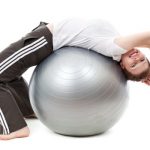Inflammation: it’s a natural process that happens in our body to help us heal from injury and help our immune system fight off invaders.
But too much inflammation – or inflammation that lasts longer than it should – can be a problem. Most importantly for chiropractors, inflammation is a factor in many types of pain, including joint and muscle pain, arthritis, back pain, and pain from injury that won’t go away.
Inflammation overload also plays a role in other problems such as skin conditions, and even – in an ‘invisible’ form – in serious health conditions such as heart disease, diabetes and Alzheimer’s disease.
While there are many things that can contribute to too much inflammation, one factor we can control is what we eat and drink.
So, here are five food-related tips to help you keep inflammation at bay.
- Load up on colourful veg and fruit
Most vegetables and fruit have great anti-inflammatory properties, thanks to their unique ‘phytonutrients’ such as flavonoids and carotenoids. These compounds are often responsible for vivid colours of fruit and veg, so you’ll find tons of flavonoids in purples and reds (think red cabbage, berries and pomegranate) and lots of carotenoids in oranges, light reds, yellows and greens (e.g. carrots, squash, tomatoes, peppers, and dark green leafy veg such as kale and spinach). So, think about ‘eating a rainbow’ of veg and fruit: it’s not just a cliché, especially when it comes to beating inflammation.
Ideally, eat more vegetables than fruit, as the sugars in fruit can add up. And eat wholefruit rather than drinking it in juice form.

- Eat lots of oily fish
Oily fish are anti-inflammatory superheroes thanks to the omega-3 fats they contain.
Oily fish include salmon, sardines, mackerel, anchovies, herring, trout and fresh (not tinned) tuna. Aim to eat three servings a week of one or more of these fish to build up your omega-3 stores.
Plant omega-3s such as those found in flaxseeds and chia seeds and their oils don’t have exactly the same benefits, as they provide a different type of omega-3. But they’re still healthy choices to include in our diet, and can be a substitute if you can’t eat fish.
- Keep it ‘real’
Generally speaking, the less you rely on processed foods, and the more you eat ‘real’ foods, the better.
‘Processed’ foods tends to mean anything that’s been made in a factory instead of being brought to you fresh or simply packaged. As well as junk foods, think supermarket baked goods, processed cheeses, most breakfast cereals, packet soups and ready meals. Not only are they generally low in natural vitamins, minerals and anti-inflammatory nutrients, they often contain added sugar or salt, as well as chemical additives that may do us more harm than good.
‘Real foods’, on the other hand, include vegetables and fruit, whole grains such as brown rice, beans and lentils, unroasted nuts and seeds, and minimally processed animal foods such as eggs, fish, whole cuts of meat and pure cheese or milk.
- Switch your vegetable cooking oils
It is best to switch all refined cooking oils such as sunflower oil and pretty much anything just labelled as ‘vegetable oil’ for more healthy options.
But how can they be bad for us, when they’ve long been touted as a healthy alternative?
Well, one problem is that polyunsaturated fats in their refined liquid form are quite fragile. When they’re heated to high temperatures during the refining process and cooking, they can easily become damaged. These damaged molecules may trigger more inflammation or ‘free radical’ damage in our own bodies when we consume too many of them.
The second problem is that vegetable oils tend to contain a very high proportion of omega-6 fatty acids. Now, while these areessential fats, when we get a lot of them in our diet they can have an overall pro-inflammatory effect (i.e. encouraging inflammation), especially when we’re getting a lot more omega-6 than omega-3 fatty acids.
So what can you use instead of vegetable oil? Well, a good choice for cooking is coconut oil. It contains primarily saturated fats, which – contrary to what you might think – are actually the safest and healthiest fats for high-temperature cooking such as roasting, frying or stir-frying, as they’re stable and have a high smoke point.
Olive oil is a great option for lower-temperature sautéing and for drizzling on salads or using in dressings. Olive oil is made up primarily of monounsaturated fats, which are more stable than polyunsaturated, and has been linked to numerous health benefits – for our heart in particular.

- Spice it up
Many spices have natural anti-inflammatory activity, with winners including turmeric and ginger. Add them liberally to homemade curries and Asian dishes (use coconut oil rather than vegetable oils, of course!). Make them into hot drinks, such as homemade turmeric latte or fresh ginger tea; or find them in the form of herbal teas.
Tip: if you’re buying powdered spices, seek out organic rather than just settling for your average supermarket version for the greatest benefits. And note the colour of your turmeric: it should be an almost fluorescent orange-yellow colour if it’s a good-quality one.
More
Beat the post Christmas Blues and join Sophie in RED January!
Usually we post challenges in the clinic for you all but we want you to know that we are always setting ourselves new challenges too. This year Sophie is taking on RED January and for those that have no idea what that is; RED stands for Run Every Day… It is organised by the mental health charity MIND and is free to take part in, but donations are welcomed from participants.
The aim of the challenge is to be more active every day in order to improve your mental health; Sophie would NOT recommend running every day if you are new to running but it can be a walk, exercise class, swim, bike ride –absolutely anything active!
Why not try joining Sophie in being more active each day during January and don’t forget to ask her how she’s getting on –I’m sure she’ll appreciate some encouragement, Sophie has set herself a minimum of 2Km (just over a mile) each day and she’s hoping it’s not too icy underfoot this month.
Why January?
- Expensive Christmas? RED is free to take part
- RED provides a goal and focus to help you through a characteristically tough month
- People can feel isolated and pressured to achieve New Year’s resolutions. RED is a no pressure movement fuelled by community spirit.
- RED empowers, educates and supports people to start the year as they mean to go on, forming healthy habits to continue beyond January.
More info: www.redtogether.co.uk
More
Don’t launch yourself into a new exercise regime without taking the necessary precautions to prevent back and neck pain…
While more exercise can in fact improve bone mass density and prevent osteoporosis, throwing yourself into a full-on physical programme after a lull in activity could put your back and neck at risk. Try introducing your body to exercise in a safe way by following these easy tips:
Preparation
- Before you begin any exercise programme, check that there are no medical reasons why you cannot carry out the activity, particularly if you are not used to the type of exercise
- Make sure you wear the right clothing while carrying out your chosen activity. Wearing clothes that are too tight could constrict your movement and lead to injury; appropriate footwear is a must for any type of exercise
- Make sure you warm up before exercises; don’t go straight in and start with lighter movements like walking or jogging to lessen the chance of muscle strain
Equipment
Ensure that you are using equipment properly to prevent injuries.
Weights
- make sure legs are at least hips width apart
- lift with bent knees
- never keep knees straight, as this could lead to over-stretching and cause damage to your back
- work with weights closer to your body to help avoid injury
Machines
- make sure the seat is positioned correctly for your height
- avoid stooping or reaching when using equipment or you could over stretch your back
Stretching
Stretches and exercises designed to strengthen your back will help prevent injuries later on. Try sequences of precise, slow stretches, which will help build up your strength.
More
Choosing a balanced diet containing the right vitamins and minerals decreases our chances of developing deficiencies later on in life. The  body’s structure relies on vitamins and minerals to ensure muscle tone (including the heart), healthy functioning of nerves; correct composition of body fluids; and the formation of healthy blood and bones.
body’s structure relies on vitamins and minerals to ensure muscle tone (including the heart), healthy functioning of nerves; correct composition of body fluids; and the formation of healthy blood and bones.
A Healthy Diet Plan
Calcium
For bone, muscle and joint health try and include Calcium in your diet, which is essential for optimal nerve and muscle function and blood clotting.
Obtained from
Dairy products are rich in calcium that is easy to absorb. Non – dairy sources with equally absorbable calcium are green leafy vegetables from the kale family. Spinach, rhubarb, sweet potatoes and dried beans are rich in calcium but from these foods it’s not easily absorbed
Magnesium
Required for efficient muscle contraction and conduction of nerve impulses. Low magnesium levels in the body can affect the body’s calcium levels, putting bone health at risk.
Obtained from
Green leafy vegetables, unrefined grains and nuts. Small amounts are present in meat and milk. Large quantities of fibre in the diet and low protein intake can reduce the amount of magnesium able to be absorbed by the body.
Vitamin D
Essential for regulating the formation of bone and the absorption of calcium from the intestine. Vitamin D is a fat-soluble vitamin that functions to help control the movement of calcium between bone and blood.
Obtained from
Primarily from the action of UVB light on the skin. Food sources such as cod liver oil, sardines, salmon, tuna, milk and milk products contain small amounts of Vitamin D.
Vitamin C
The structure of bones, cartilage, muscles and blood vessels is provided in part and maintained by collagen. The formation of strong efficient collagen requires Vitamin C.
Obtained from
Citrus fruits, berries, tomatoes, cauliflower, potatoes, green leafy vegetable and peppers. Also important for producing strong collagen and therefore strong bone structure, is Folic acid. Folic acid is found in cereals, beans, green leafy vegetables, orange and orange juice
Antioxidants
Vitamin C is also a strong antioxidant and is capable of regenerating other antioxidants like vitamin E. The role of antioxidants is to mop up free radicals (the by-products of normal metabolism). Excessive amounts of free radicals cause damage to joint surfaces and muscle cell regeneration. Antioxidants reduce the potential of these free radicals to cause joint damage.
Obtained from
Antioxidants are vitamins A, C, E and the mineral selenium and are present in fruits and vegetables, the highest quantities are found in the most deeply and brightly coloured. Cartilage that lines the articulating surfaces of all joints is critical to joint health. Cartilage is the shock absorber of joints and is continually rebuilt if a source of raw materials is available. Supplements such as glucosamine sulphate can be added to a healthy diet to assist joints that maybe showing signs of wear and tear.
Essential fatty acids
Essential fatty acids (EFA’s) also reduce the degenerative changes in tissues and cells. EFA’s are unsaturated fatty acids such as Omega 3. They aid in decreasing the inflammatory response and help relieve pain and discomfort in joints and muscles.
Obtained from
EFA’s can be found in oily fish (sardines, fresh tuna, mackerel), flax seed and linseed.
Foods to avoid…
There are certain foods and substances that adversely effect the body’s use of minerals and vitamins. High saturated/animal fats, refined foods, white flour, white sugar, white rice, chocolate, carbonated drinks and fruit juices with high sugar concentration should be kept to a minimum if not weaned from the diet completely. Meat and dairy products should be kept within a recommended weekly amount. Dairy products as calcium sources should be varied with other non-dairy sources.
More
If you’re following the trends in exercise and fitness, you’ve probably heard the phrase “core strength” or “core stability.” These terms refer to the muscles of your abdominals (stomach) and back and their ability to support your spine and keep your body stable and balanced, helping to prevent back pain.
The core muscles lie deep within the trunk of the body. They generally attach to the spine, pelvis and muscles that support the scapula. They stabilise these areas to create a firm foundation for co-ordinated movement of the legs and arms.
Core stability is also needed in everyday life, helping to keep you fit and to prevent injury when you are lugging those heavy shopping bags or doing the ironing. Rises in back pain incidence have been linked to the sedentary lifestyle that many of us lead. How about neck and shoulder pain? Time spent hunched over the desk instead of getting out and about can mean that we don’t pay enough attention to posture, and the muscles of those crucial “corset” muscles.
To strengthen your core stability:
- Start by lying on your back with knees bent.
- Your lumbar spine should be neither arched up nor flattened against the floor, but aligned normally with a small gap between the floor and your lower back. This is the “neutral” lumbar position you should learn to achieve.
- Breathe in deeply and relax all your stomach muscles.
- Breathe out and, as you do so, draw your lower abdomen inwards as if your belly button is going back towards the floor.
- Hold the contraction for 10 seconds and stay relaxed, allowing yourself to breathe in and out as you hold the tension in your lower stomach area.
- Repeat 5-10 times.
Bear in mind the following points:
- Do not let the whole stomach tense up or your upper abdominals bulge outwards, as this means you have cheated by using the large rectus abdominus muscle (the six-pack).
- Do not brace too hard; just a gentle contraction is enough. Remember it’s endurance not max strength your are trying to improve.
- Do not tilt your pelvis nor flatten your back, as this means you have lost the neutral position you are trying to learn to stabilise
- Do not hold your breath, as this means you are not relaxed. You must learn to breathe normally and maintain the co-contraction.
- Use your fingers for biofeedback on either side of your lower abdomen to feel the tension.
Once you have mastered the abdominal hollowing lying on your back, practise it lying on your front, four-point kneeling, sitting and standing. In each position get your lumbar spine into neutral before you perform the hollowing movement. If you feel any pain or discomfort while doing these exercises, then stop immediately and seek medical advice before continuing.
More
For us to maintain the very high standard of service, care and support for you, we will be restructuring and slightly increasing clinic fees from April 2019:
Chiropractic
Treatment Adult £36, Child (under 16 years) £30
Double appointments £50
New Patient Adult £52, Child (under 16 years) £40
Massage therapy
One hour £40 (concessions £35)
Half Hour £20 (concessions £17:50)
More
Christmas 2018 Opening Hours
Friday 21st December 8am – 5pm
Sophie, Ruth
Saturday 22nd December 8am –12 noon
Sophie
Sunday 23rd December Closed
Monday 24th December 8am-12 noon
Andrew
Tuesday 25th December Closed
Wednesday 26th December Closed
Thursday 27th December 8am-8pm
Andrew, Alex
Friday 28th December 8am -5pm
Alex
Saturday 29th December 8am-12noon
Andrew
Sunday 30th December Closed
Monday 31st December 8am-12 noon
Andrew , Alex
Tuesday 1st January Closed
Wednesday 2nd January 9am -8pm
Normal hours resume
More

We know that facial muscles affect facial expression, and in turn can influence emotion, but it’s rarely considered that other muscular states can also affect mood. Research suggests that this is the case and that sitting upright can build resilience to stress.
Especially when under pressure and distracted, people are likely to pay less attention to their posture. However, research indicates that good posture at times of stress can help to maintain self-esteem and positive mood, whereas slumped postures have the opposite effect.
It is important to take care of your posture and there are a number of ways to do this, both at home and at work, and especially when using a computer.
- When relaxing in a chair, such as when watching television, it is important to ensure that as much of the body as possible has contact with the chair for optimal support.
- Avoid sitting for more than 30-40 minutes at a time. Remember to stand up, stretch, change position, walk around and go and get a drink of water!
- When stretching, concentrate on opening up your chest, abdominal area and hip flexors. Your chiropractor can advise you on the best movements for this.
- Perform exercises to strengthen the muscles that support your posture. Exercises such as resistance band pull-aparts are good, and your chiropractor can advise you on other suitable exercises.
Of course, perhaps the time that slouching most commonly occurs in our society is during the hours that are spent hunched over a desk, working at a computer.
- Ensure that your desk, chair and monitor are set up following proper guidelines.
- Take regular breaks. Set a timer to remind yourself if you’re guilty of forgetting to do this when immersed in work.
- If using a laptop, ensure that is placed on a desk or table rather than your lap to avoid looking down, slouching, and leaving your neck unsupported.”
Your chiropractor will be able to conduct a postural analysis and suggest stretches, exercises and lifestyle changes that can improve your seated posture and enhance your mood.
More
Sometimes the cause of back pain is obvious, for example a sports injury.
However… Sometimes the culprit could be surprising, such as improper footwear, especially high heels.
Why do they cause damage? When women wear high heels their body will attempt to compensate for the uneven balance they cause by flexing or forward bending their hips and spine. Heels can cause people to mimic the way a person would walk on a ramp and thus increase the pressure placed on the balls of the feet and the knees.

Lower Back
The lower back is also pushed forward causing the hips and the spine to become dis-aligned. The changes to the posture cause a prolonged tensing of the calves, hips and back muscles. This results in excess muscle fatigue and strain at the end of the day. Over long periods of time this can cause serious problems for your leg muscles and spine health
The Height of the Heel
The height of the heel can also determine the weight carries be the footwear. As the height of the heel increases so does the pressure on the ball of the foot. Stilettoes can therefore cause the most damage to your posture and overall spine health. It is therefore advised where possible to wear as lower a heel as possible
How to help your back:
If you do wear high heels take a few aspects into consideration to make sure you’re causing yourself as little damage as possible
- Try and avoid wearing high heels for long periods of time where possible
- If you have to commute each day it is wise to commute in flat shoes that cushion and support the natural arch of your foot and change into high heels when you get into the office
- If you do wear a lot of high-heeled shoes try and opt for ones with a lower, wider heel, preferably no higher than two inches, to reduce the amount of pressure being placed on your feet and calf muscles
- It can also be wise to buy shoes in the afternoon, when feet are at their largest, this will make sure your shoes will be to accommodate for the natural expansion of the feet throughout the day.

Make Sure Not To Trip!
As your balance can be more unsteady when you wear high heels it increases the possibility of you tripping over and causing yourself an injury. In consideration of this, it is a good idea to opt for shoes with a leather insole to keep the foot from slipping and provide a steadier grip when you’re walking around
More
 Today’s modern living which often entails hours of driving and hunching over work stations plays havoc with your neck. Neck pain can be felt in a large number of ways, either in your neck itself, across the shoulders, down the arms or as a headache. Neck and back problems are often worsened, if not caused, by improper sleeping habits and bad or worn out pillows. Sleep is very important to your body’s repair process, and a poor pillow often accounts for disturbed sleep. Compromise the quality of sleep, and overall health and mental fitness may suffer as well.
Today’s modern living which often entails hours of driving and hunching over work stations plays havoc with your neck. Neck pain can be felt in a large number of ways, either in your neck itself, across the shoulders, down the arms or as a headache. Neck and back problems are often worsened, if not caused, by improper sleeping habits and bad or worn out pillows. Sleep is very important to your body’s repair process, and a poor pillow often accounts for disturbed sleep. Compromise the quality of sleep, and overall health and mental fitness may suffer as well.
To support your tender and vulnerable neck you need to use a pillow that can be shaped to hold your neck in alignment and adequately support your head. This relieves muscle tension around your neck and shoulders and correctly positions your head, arms, and lower back for a relaxed sleep.
The support of a pillow should be mostly under your neck. Pillows that can be fluffed and squished to fit your unique contours, shape, and sleeping posture offer the best solution. A pillow should “fit”, just like a pair of shoes.
Natural-fill pillows such as down and feather provide the most comfort, long-term performance, and adjustability of any pillow, and they gently support your head. Unfortunately, most people hang on to a pillow long after its healthy sleeping power.
It is crucial you avoid using little or no pillow as this places your unsupported neck under strain all night long. It is equally unwise to use too many pillows or a pillow that is too firm as this can push your neck up, preventing the neck joints from moving properly, regardless of which position you sleep in.
It is also important to remember that a pillow should be placed between your neck and shoulder, but not underneath your shoulder itself. Taking this into account, a person with broader shoulders will require a larger pillow than someone with narrower shoulders, if they sleep on their side.
More




 body’s structure relies on vitamins and minerals to ensure muscle tone (including the heart), healthy functioning of nerves; correct composition of body fluids; and the formation of healthy blood and bones.
body’s structure relies on vitamins and minerals to ensure muscle tone (including the heart), healthy functioning of nerves; correct composition of body fluids; and the formation of healthy blood and bones.



 Today’s modern living which often entails hours of driving and hunching over work stations plays havoc with your neck. Neck pain can be felt in a large number of ways, either in your neck itself, across the shoulders, down the arms or as a headache. Neck and back problems are often worsened, if not caused, by improper sleeping habits and bad or worn out pillows. Sleep is very important to your body’s repair process, and a poor pillow often accounts for disturbed sleep. Compromise the quality of sleep, and overall health and mental fitness may suffer as well.
Today’s modern living which often entails hours of driving and hunching over work stations plays havoc with your neck. Neck pain can be felt in a large number of ways, either in your neck itself, across the shoulders, down the arms or as a headache. Neck and back problems are often worsened, if not caused, by improper sleeping habits and bad or worn out pillows. Sleep is very important to your body’s repair process, and a poor pillow often accounts for disturbed sleep. Compromise the quality of sleep, and overall health and mental fitness may suffer as well.